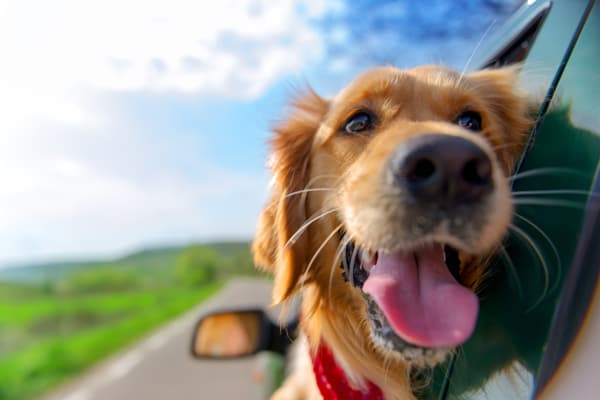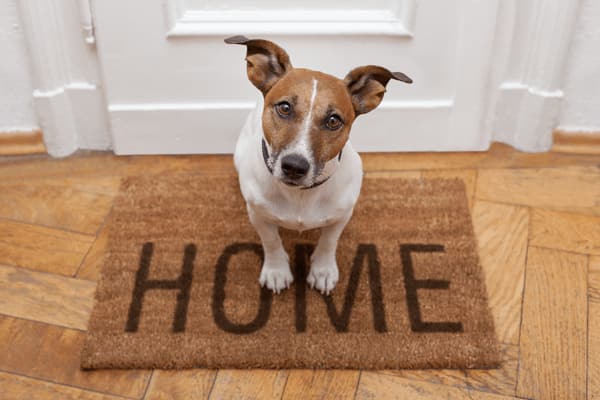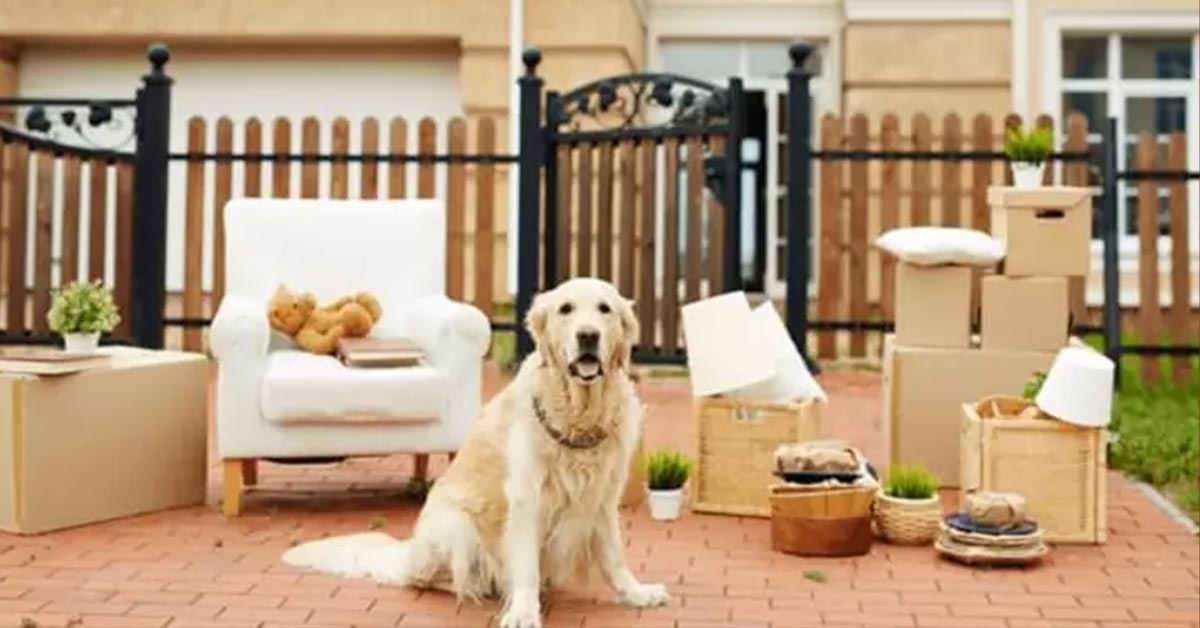Transitioning to a new home can be stressful for anyone, including your pets. Unexpected activity in the home, sudden changes in routine, family members coming and going, and new environments can easily make your pets feeling anxious. It is not easy to move with animals, but with forethought and planning, you can make sure that your move goes smoothly for both you and your precious furry cargo.
Before the move
As you get closer to the move, your schedule gets more hectic. With such a busy schedule to manage, your pet’s feeding times start to vary, they receive less attention and exercise, and spend more and more time behind closed doors or inside kennels. During this time, it is important to be on the lookout for possible stress-induced behavioral changes, which may include a lack of appetite, whining, listlessness, or accidents in the house. When you are at the pre-move stage,
- Try to maintain consistency in your pet’s usual feeding schedule.
- Give them attention and play with them when you can.
- Take them out of the house. Whenever possible, give them a break from the craziness inside the house and take them for a walk or in the car with you during open houses.
Pet Preparation
Plan and prepare a pet travel bag. No need to go overboard, just make sure you pack the basics to cover your trip: your pet’s favorite food and treats, at least a gallon of water, a pet first aid kit, and some extra towels in case of accidents. Make temporary ID tags and put them around your pet’s collar and include: your name, destination address, and the phone number you can be reached at. After your move, make sure that you update the agency that has your pet’s ear tattoo or microchip information with the new address and required information.
Traveling by vehicle tips
If your pet’s only exposure to a carrier was the day you brought them home, or only time spent in the car is during trips to the vet, then you will want to start to acclimate them a few weeks prior to the move. Place your pet’s carrier somewhere in the house where they can interact with it daily. Place their favorite blanket or toy inside and praise them every time they go inside it. Pet carriers should be large enough for the animal to comfortably stand, lie down, and turn around. Your carrier should be appropriate to the species of animal that is traveling, so if you are unsure, inquire with your veterinarian about what type of carrier you may need.

- Cats and small animals such as rabbits, guinea pigs, ferrets and birds should be confined to a hard-sided carrier. Ensure there is enough room on either side of the carrier for ventilation. It is recommended that you use a sheet or light blanket to cover the carrier for the first few hours of the trip. After a few hours, your pets should relax, and the sheet or blanket can be removed.
- You may choose to either confine your dog in a kennel or restrain them. You can attach safety harnesses to any seat belt, which allows them to sit or stand comfortably, or setup a mesh or metal safety gate to allow them more mobility. It is important to restrain your dog before you embark on your trip because an agitated dog can be a dangerous distraction to the driver.
- Watch the weather. Temperatures inside a vehicle can quickly rise or drop in extreme hot and cold weather, which can cause your pets to suffer, or even die. Animals should not be kept inside vehicles for long periods of time. If you need to leave your pet inside your vehicle for a short period of time, ensure that you leave the windows a little bit open, enough to create a cross-breeze, and your pet has access to fresh water.
Traveling by plane tips
It is a good idea to visit your vet to check the health of your pet before any long trips to ensure they are fit for travel. Ask your vet for a current health certificate for your pet as it may be required for travel, especially if you are flying internationally.

- On most commercial flights, you may fly together with your cat or small dog in the cabin. Your pet in its carrier will count as one standard item toward your carry-on allowance. Remember to arrive at least 30 minutes prior to check-in time to check-in with an agent as passengers traveling with pets cannot check-in online or at a self-service kiosk.
- Pets that are too large to travel in the cabin will travel unaccompanied as airfreight in the pressurized cargo compartment of the plane. Contact your airline to arrange the details of how your pet will be confined. The fees are generally higher, and pets must travel in carriers. Reservations should be made no more than 24hrs after booking your ticket.
- Always remove your pet’s leash before placing them inside the carrier.
- Feed your pet 4-6 hours prior to departure.
- Allow your pet water right up to the time of travel. Leave the dish in the carrier so an agent may provide water if there is an extended wait before or after the flight, or during connections.
- Tranquilizers and other medications are not recommended. Consult with your veterinarian.
- Cover the bottom of the carrier with blankets and absorbent material. Add your pet’s favorite toy to it to provide them with a sense of familiarity and comfort.
After the move
For you, arriving to your new home is an exciting relief, but for your pets, it is a strange new world with new smells, sights, and noises. When you have arrived at your destination, remove your pet from the car and segregate them in a single room with all their belongings. Do not let your anxious cat or dog loose in the house until you have had the chance to walk through your new home and inspect for any open doors or windows. A loose cat or dog can easily slip out and get lost in a new area.

- Update your animal’s tags with your new contact information as soon as you can.
- At first, your pet may seem out of sorts or uninterested in their new surroundings, but that is okay, just allow them a little bit more time to acclimate and get familiar with their new surroundings.
- For the first few weeks, it may be best to keep your animals in the kennel while unintended.
- To keep an eye out for accidents or chewing during the first few weeks, you may want to consider keeping your dog on a leash while you let them roam around their new area.
- To help ease your animal’s anxiety, try to set-up your pet’s water and food dishes and other familiar items in the same locations they were in your previous home.
- You may instinctively want to wash all your pet’s blankets right away but try to hold off. The familiar smells will make them feel more at home.
- Make sure you continue to play with your pet and give them attention while you unpack.
- Routine is important. To help get your pet feeling comfortable, maintain their usual schedule as quickly as possible and stick to it.

